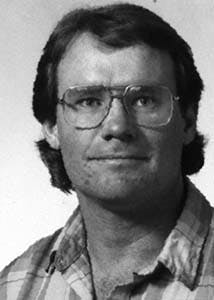James Griffith,
Halliburton Energy Services Inc.
Duncan, Okla.
Ronnie Faul
Halliburton Energy Services Inc.
New Orleans
Successful deepwater cementing requires improved mud-management techniques to reduce fluid loss, shorten slurry transition times, and make mud and cement slurry weights compatible with formation pore pressure and fracture gradients.
If any one of these conditions is not met, the cementing job is less likely to be successful. Previous attempts to drill in deep water have had a low success rate, and failures have cost operators an average $2 million/well.
By using new mud-management techniques and specially designed cement mixtures, operators in the Gulf of Mexico (GOM) are effectively setting conductor casing in deepwater conditions and are greatly improving the success rate in cementing deepwater wells.
Recent case histories in the GOM describe these new techniques and the advantages of using a specially formulated, lightweight, foamed cement slurry to avoid cement-sheath damage caused by shallow-water flow.
Deepwater cementing challenges
Deepwater conditions, typically deeper than 1,000 ft, include low-water temperatures, overpressured water-flow formations, and low-fracture gradients to 2,000 ft below the mudline.
Figs. 1 [69,172 bytes] and 2 illustrate the soft formations that complicate deepwater cementing off the continental shelf. The geologically young formations were formed by erosion and sloughing of the continental shelf resulting in poorly consolidated formations.
The principal challenges of using conventional methods to set casing in deepwater conditions are:
- Water-extended cement slurries often fail to attain significant compressive strength.
- Heavyweight slurries fracture the young formations.
For example, a GOM well drilled in a water depth of 1,900 ft used conventional drilling methods and a water-extended slurry to set 20-in. casing at 3,800 ft. Unfortunately, the cement sheath that covered the casing was damaged by water flow. Traditional efforts to stop the water flow failed, and the well had to be plugged and abandoned at a cost of $2 million.
Low-density slurries, such as water-extended slurries, can help prevent fractures in the shallow, unconsolidated zones; however, conventional low-density slurries have longer transition times in low temperatures.
Transition time is marked from the time a pumped cement slurry begins to develop static gel strength (exerts less hydrostatic pressure), to the time when the slurry has enough static gel strength to prevent fluid migration.
Longer transition times can prevent slurries from reaching an initial set condition, providing less resistance to water influx, and allowing more time for annular influx to damage the cement sheath.
Fig. 3 [8,292 bytes] shows the condition of casings set using conventional methods. Fig. 4 [7,221 bytes] shows the annular condition after application of recently developed practices.
Solving deepwater cementing problems
To solve deepwater cementing problems, several operators and Halliburton Energy Services joined forces to:- Develop a lightweight, foamed slurry (LFS) formulated from a combination of Portland cement and ultrafine-grind Portland cement.
- Define the most successful techniques for using this slurry.
Improved mud conditions, based on the use of large-scale displacement tests, improved spotting-fluid/foamed sweeps, and specially designed slurries, resulted in a success ratio of 60 out of 61 wells using the new procedures and slurry mixture.1
Successful mud-management techniques
Large-scale displacement tests allowed the companies to develop general guidelines for mud management in deepwater cementing. 1-3 This best-practices procedure assumes the following:- A riser is not in place.
- There are no geophysical data to help operators avoid major water-sand locations.
- The drive pipe is set at approximately 200 ft, and a 26-in. hole is drilled to approximately 2,000 ft below the mudline.
The following procedures describe guidelines used to set 20-in. casing through a water flow zone. The process should be designed to eliminate seawater in the drill pipe and in the 20-in. casing string below the drill pipe stinger.
- Drill a 9.625-in. to 12.25-in. pilot hole and obtain measurement-while-drilling and pressure-while-drilling data to locate the depth, thickness, and pore pressure of the sands. Drill with seawater and gelled drilling-fluid sweeps.
- Immediately provide data collected in Step 1 to the cementing company so engineers can design hydrostatic parameters for the kill fluid and cement job needed to control flow from the sands.
- Drill the pilot hole to a depth of approximately 2,000 ft, depending on the sand location.
- Ream the pilot hole to 26 in. from mudline to total depth (TD).
- Use the drilling-fluid sweeps with low fluid-loss properties when drilling through and below the sands. If the penetration rates are too high, the equivalent-circulating density (ECD) will increase beyond fracture pressure
- When TD is reached, displace the hole content with a low fluid-loss drilling fluid (kill fluid) and short-trip the bit to the drive-pipe shoe. Mud cake deposition on the formation face will be thin, requiring less force from the cement to displace the mud. The weight of the premium drilling fluid should be approximately 0.5 ppg over the pore pressure of the sand formation, but it should always be less than the fracturing pressure of the sands.
Moderate fluid loss is needed only if controlled drilling fluid sweeps are used in drilling the conductor hole. Tests indicate that once a low fluid-loss filter cake is deposited, excessive filter cakes will not form unless erosion or mechanical means removes the filter cake.
- Run in the hole to TD and displace the hole with a foamed sweep and a low gel-strength drilling fluid or a settable spotting fluid. The fluid-loss properties should also be low (? 7 cc/30 minutes). The fluid should exhibit a flat gel-strength profile at bottom hole conditions. Gel strength controls the amount of channeling in the annulus. If the gel strength is greater than 25 lbf/100 ft /30 min, fluid rates will not erode the gelled drilling fluid. Keep the hole static by obtaining a hydrostatic pressure of at least 0.5 ppg over sand pore pressure.
- For a typical inner-string cement job, trip out with the drillpipe and run in the hole with casing or drill string. Large-scale tests show that centralization of the casing is not critical if a low-gelling drilling fluid or settable spot is used.
- Pump one or two inner-string volumes of drilling fluid (not seawater) to detect operational problems.
- If the drilling fluid and cement are not compatible, use a spacer that is weighted above the drilling-fluid's density.
- Eliminate seawater circulation before the cement job to maintain an overbalanced condition to the sands.
- Cement the casing through the inner string. Use the specially formulated cement with additives for pump times and compressive strengths as conditions dictate.
Slurry formulated for deepwater conditions
To reduce hydrostatic pressure on weak formations, operators have successfully used slurries consisting of nitrogen-foamed cement.5 Highly reactive cements, such as ultrafine cement, are added to these slurries to hasten the onset of hydration, particularly in the 40-60° F. deepwater temperature range prevalent in the deep U.S. Gulf waters.Tests indicate that the ideal transition time in deepwater conditions is under 30 min and that the ideal slurry weight is from 10.5 to 13.0 ppg. The traditional low-density, water-extended slurries have long transition times (approximately 3 hr) that allow fluid influx into the setting slurry. Cool temperatures can further increase transition time.
Case Study 1
Saltwater flow problems after cementing surface and conductor casing were a problem for one GOM operator. The challenge was to prevent saltwater flows while cementing 24-in. conductor to 2,600 ft and 20-in. surface casing to 4,200 ft below the mudline.The bottom hole temperature (BHT) was 60-70° F., mud weights were 9.4-10.1 ppg, and water depth was 1,735 ft.
The service company ran a weighted spacer system with a density equal to or greater than kill mud weight, which conditioned the kill mud to achieve recommended mud properties before spotting into the well bore. The surface and conductor casings were cemented with the specially formulated cement and showed no saltwater flow following the job. The new products and procedures saved the operator approximately $980,000.
Case Study 2
These new techniques and the specially formulated cement were also used to avoid water flow problems in another GOM well in the Mississippi Canyon Block 85. The job involved cementing 20-in. conductor casing in a 36-in. drive pipe set at approximately 5,600 ft, about 175 ft below the mudline.The casing, centralized with four rigid-type centralizers, was to be set at 6,800 ft, about 1,400 below the mudline. The TD of the open hole was 6,800 ft, the water depth was 5,400 ft, and water temperature at 6,800 ft w as measured at 70° F. after LFS was used to set the casing and no water flow problems were detected.
Case Study 3
Drilling in 4,289 ft of water in the Green Canyon block of the GOM, this operator needed to cement a 24-in. conductor casing at 4,829 ft measured depth (MD), 20-in. surface casing at 6,300 ft MD, and 16-in. drilling liner at 8,610 ft MD.To cement the 24-in. conductor casing, the service company pumped 100 bbl of spacer fluid, 300 sacks of LFS mixed at 12.5 ppg, and 250 sacks of standard cement mixed at 15.6 ppg. The 20-in. surface casing required 100 bbl of spacer, 1,571 sacks of LFS slurry, and 1,140 sacks of standard cement. The 16-in. drilling liner required 100 bbl of spacer fluid, 500 sacks of LFS, 950 sacks of light cement, and 900 sacks of premium cement.
All three strings were cemented without flow. The operator saved at least $250,000 that would have been required for one squeeze job. Loss of the well would have cost the company approximately $2 million.
Case Study 4
Another Green Canyon field, at a depth of 4,300 ft, was having problems cementing the conductor casing, surface casing, and drill liner at a bottom hole temperature of 40° F. Heavyweight slurries had fractured the shallow, unconsolidated zones, resulting in lost returns and water flows.The service company pumped a spacer, LFS, and a standard or premium slurry. No water flow was detected, and the cost savings to the operated were estimated at $250,000 to $2 million.
References
- Griffith, James, and Faul, Ronnie, "Cementing the Conductor Casing Annulus in an Overpressured Water Formation," Paper No. OTC 8304, Offshore Technology Conference, Houston, May 5-8 1997.
- Crook, R.J., Keller, S.R., and Wilson, M.A., "Solutions to Problems Associated with Deviated-Wellbore Cementing," Paper No. 14198, SPE Annual Technical Conference and Exhibition, Las Vegas, Sept. 22-25, 1985.
- Haut, R.C., and Crook, R.J., "Primary Cementing: The Mud Displacement Process," Paper No. 8253, SPE Annual Technical Conference and Exhibition, Las Vegas, Sept. 23-26, 1979.
- Griffith, James E., "Method for Cementing in a Formation Subject to Water Influx," U.S. Patent 5,484,019, 1996.
James Griffith is the global advisor for deepwater technology at the Halliburton Energy Services Inc. Technology Center in Duncan, Okla. Before joining Halliburton, he worked as a production engineer for Chevron U.S.A. and as a drilling engineer for an independent production company. Griffith has BS and MS degrees in petroleum engineering from the University of Oklahoma and an MBA from Oklahoma City University.
Ronnie Faul is a technical analyst at Halliburton's New Orleans office. He has served 24 years with Halliburton in South Louisiana, South Texas, and the Gulf Coast. In his tenure with Halliburton, Faul has held a variety of engineering and management positions. He is a member of SPE and AADE.
Copyright 1997 Oil & Gas Journal. All Rights Reserved.




